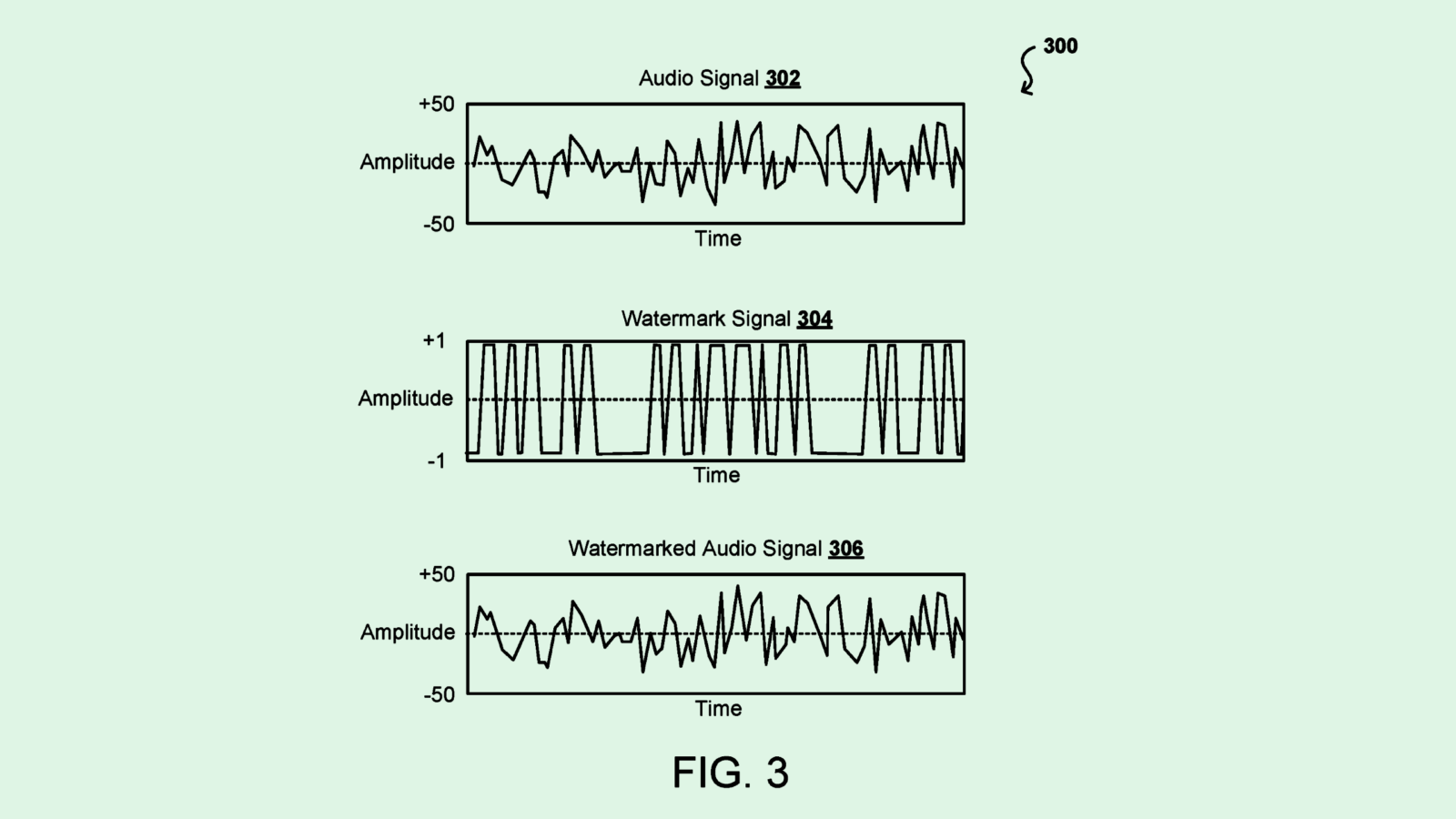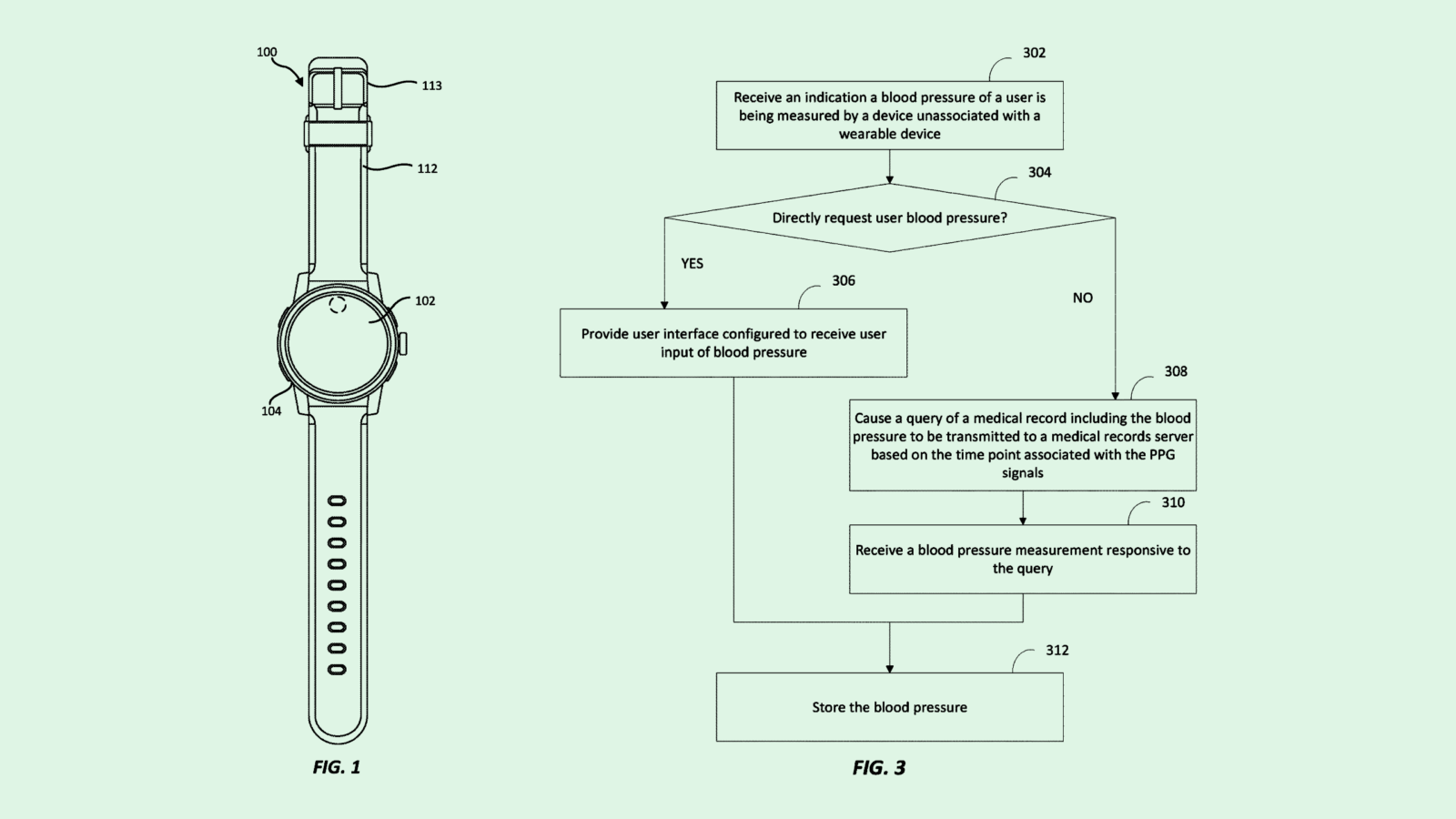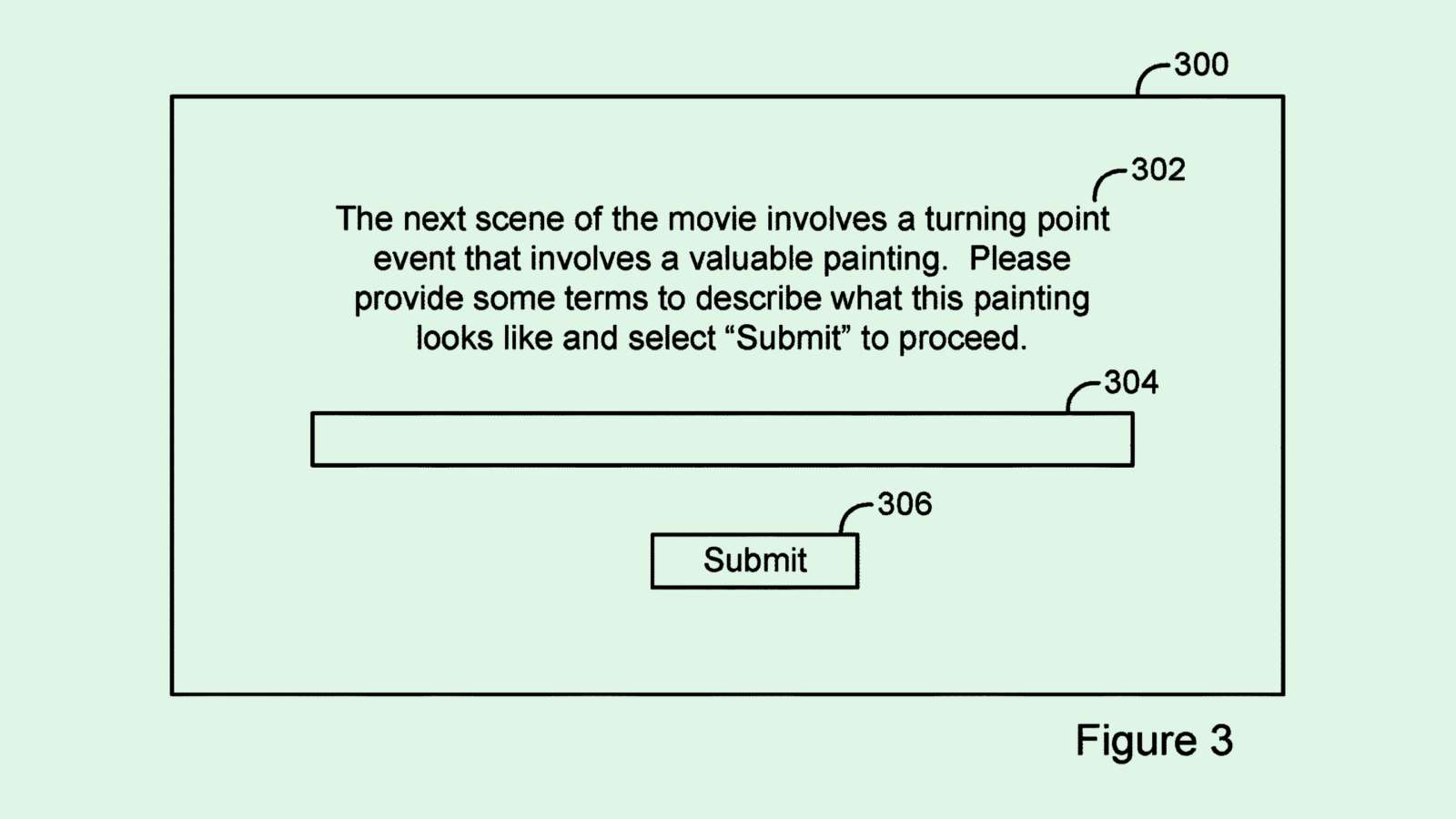Happy Monday and welcome to Patent Drop!
Today, a patent from Nvidia for imperceptible AI watermarks could help subtly separate real from fake as AI-generated content continues to grow. Plus: Meta may add health tracking to its smart watch ambitions, and Roku wants to personalize movie night.
Let’s take a peek.
Nvidia’s Synthetic Secret
Amid an ever-growing pile of AI-generated content, Nvidia wants to help discern what’s authentic.
The company filed a patent application for “watermarking for speech in conversational AI,” which creates an “audio watermark” for synthetically generated speech that isn’t perceptible to the human ear.
AI-generated content has reached a point where it’s difficult to discern between authentic and synthetic, Nvidia said in the filing. “This can be used for various malicious purposes, such as to convey untrue information or to gain access to something protected using voice recognition technology.”
When a neural network-based text-to-speech generator creates synthetic speech, Nvidia’s tech inserts a watermark into the audio data through a process called “spread-spectrum watermarking,” which encodes digital identifiers that aren’t detectable in the sound itself.
The average listener wouldn’t notice the watermark upon playback. Instead, it’s detectable via a “key to verify presence of the expected watermark,” Nvidia said. “An entity without the key would have difficulty completely and accurately detecting, modifying, or removing watermark.”
The watermark may also be updated over time to determine whether or not the audio has been edited. Nvidia noted that this system may also be embedded within an audio player, such as Zoom or Skype, which would notify meeting participants that synthetic audio is being played (or prevent that audio from being played at all).

The sea of AI-generated content is constantly growing. And while sometimes an extra finger or uncanny voice crack can give away the true source of a photo or audio clip, it can be difficult to tell.
Watermarking, as Nvidia is proposing, may be part of the solution, said Theresa Payton, CEO and chief advisor at cybersecurity consultancy Fortalice Solutions. The benefits are clear: “It’s preventing fraud, preventing misinformation and disinformation. It’s showing you authorship and authenticity.”
And embedding watermarking tech like this into remote communication tools as Nvidia suggests could help build trust in remote interactions, she noted, whether it’s interviewing job candidates, discussing confidential information, or warding off cybercriminals.
That factor’s bound to attract interest from customers — both to Nvidia’s product offerings and the platforms that implement them. “Any platform that says, ‘We are implementing this technology to make sure that who you’re on the line with is not a deepfake,’ is going to have a competitive advantage,” said Payton.
So why do deepfakes and synthetically-generated content matter to Nvidia? Given that the company is the darling of the AI market, with its chips powering the development and growth of multi-billion parameter models, researching this tech could aim to prove a commitment to safety and ethics, said Payton.
“They offer the chip that is fueling predictive AI and generative AI, and they’re hearing the downsides of the misuse of that technology,” Payton said.
However, with every clever solution generally comes an equally clever workaround, Payton noted. “What we have to keep in mind is, every time we implement technology, cybercriminals don’t go away,” she said. “This could be one of many things that we’ll have to implement.”
Actionable Intelligence, Built for the Modern Financial Advisor
The wealth management industry is a notoriously competitive industry. On top of that, advisors must balance client needs, craft top-tier investment strategies, navigate volatile markets, and manage operations. All this can be overwhelming.
Enter FA Upside — a brand new newsletter backed by us, The Daily Upside, for modern financial advisors. This product, led by seasoned journalist Sean Allocca, formerly of Financial Planning and Investment News, is a mecca for those who want to build a successful advisory practice.
Get investment commentary from the brightest minds in finance and practical tips for running your business effectively.
Meta’s Health Tracker
Meta’s latest patent may add another piece to the company’s murky smartwatch plans.
The tech firm filed a patent application for “obtaining blood pressure measurements.” As the filing’s title implies, Meta’s tech collects biometric signals and displays user health data via a wearable device. Though this would most likely be a smartwatch, Meta listed several applicable wearables, including smart glasses and an artificial reality headset.
“Accurate measurements of blood pressure, that are measured quickly and non-invasively, are difficult to obtain,” Meta claimed in the filing. “Such techniques typically determine a relative blood pressure that then need to be scaled to an absolute blood pressure.”
Meta’s tech relies on a wearable device that collects “photoplethysmography” signals, or optical measurements collected via the wrist, using sensors positioned within it. Those signals help Meta determine if blood pressure is being measured by a device that is “unassociated with the wearable device,” such as within a clinical setting.
In response to determining that a user is getting their blood pressure taken by an unassociated device, Meta’s watch or other wearable may activate, presenting the wearer with a user interface that requests their absolute blood-pressure measurement, helping it scale the relative one collected through its own wrist sensors.
Alternatively, that request may be “transmitted to a medical records server,” rather than asking the user to input their blood pressure.

This isn’t the first time we’ve seen Meta take an interest in smartwatches. The company previously sought to patent “pressure sensing” for biometric measurements in a “wrist-worn device.” And publicly, the company has included smartwatches as part of its larger artificial reality roadmap as peripheral devices, AR VP Alex Himel told The Verge last year.
This patent, however, might say less about what its smartwatch plans are and more about its legal strategy, said Micah Drayton, partner and chair of the technology practice group at Caldwell Intellectual Property Law. “What a patent really covers isn’t so much what you do, but what you don’t want other people doing,” said Drayton.
Amid the yearslong legal battle between Apple and medical tech firm Masimo over blood-oxygen sensors, Drayton said, Meta may be seeking to carve out a piece of IP that’s as close to that territory as possible without actually infringing. Therefore, if Apple, Masimo, or any other tech firm seek to add blood-pressure sensors to their lineup, they’d have to go through Meta, Drayton said: “An enforceable patent is immediately twice as valuable as ones that don’t have infringers.”
The other consideration, however, is the value of the data itself. Meta has filed plenty of patent applications for tech that gets closer and closer to its users, including tech to read your brain and body signals. In-depth personal data of that sort could have a number of use cases, especially for a company seeking to build more engaging user experiences.
Roku’s Personalized Content
Roku wants you to choose your own adventure.
The entertainment tech firm is seeking to patent a content system that includes a user input-based video content generation feature. Roku’s tech uses generative AI to allow users to fill in the blanks while watching content.
Personalization can create a far more engaging experience for a watcher, Roku noted in the filing. As it stands, personalization is often achieved through pre-recorded and pre-produced segments that the user can choose from. “Although this provides some level of customization, users may still not find the video content especially interesting or engaging,” Roku said.
Instead, Roku’s tech generates segments “on the fly” based on a user’s data, which includes both direct input from the user as well as geographic location, the time of day, current events, and more. This might be “presented as a ‘customize the story’ or ‘choose your own path’ video content experience or the like,” Roku noted.
To get this input, a user may be given a prompt related to the content they’re watching. For example, if an upcoming scene involves a painting, the user may be asked to describe what they want the painting to depict. That information is then fed to a deep neural network that can generate the customized video or audio.

Roku has previously taken an interest in dancing with AI. The company announced at the start of the year that it’s working on bringing AI-powered TVs into its lineup. Roku also previously sought to patent AI-based content emotion-reading technology to help match ads to content.
The filing highlights the growing partnership between generative AI and entertainment as the tech is continually woven into practically every industry, said Dan Goman, CEO and founder of media software firm Ateliere Creative Technologies. “AI has a role in every single stage of the content life cycle,” Goman said.
Bringing AI into the world of entertainment has come with its fair share of controversy: The nearly 150-day writers strike in Hollywood put up strong guardrails against the use of generative AI in the writer’s room.
But instead of replacing humans in creative processes, there are several processes where generative AI may stand to optimize entertainment, said Goman. One of those areas, as exemplified in Roku’s patent, is personalization.
With the rise of hyper-personalized social media algorithms serving up short-form content, Goman said, the average viewer’s media diet is quickly changing (and attention spans quickly shortening). Bringing that power to platforms like Roku, Netflix, or other streamers — and taking it a step beyond by personalizing not just the recommendations, but the content itself — could be “the next frontier,” said Goman.
“We’re now in an age where it’s all about narrow reach, and very specifically tailored content to my personal tastes,” he said. “Yes, there’s competition when it comes to other streaming services, but the other point here is that they’re competing with social media platforms. I think this is one of the ways that media companies can combat that.”
Extra Drops
- Meta wants to capture your gestures. The tech firm wants to patent “extended reality user interfaces for hand-based input.”
- Microsoft wants to know your whereabouts — without sucking up too much power. The company filed a patent application for “presence detection power efficiency improvements.”
- Snap wants to be your metaverse shepherd. The company filed a patent application for an “AR navigation aid for user guidance.”
What Else is New?
- Google is reportedly in talks to acquire cybersecurity firm Wiz in a deal worth $23 billion, its largest acquisition to date.
- Whistleblowers have allegedly filed SEC complaints against OpenAI for overly-restrictive non-disclosure agreements.
- Whistleblowers have allegedly filed SEC complaints against OpenAI for overly-restrictive non-disclosure agreements.
Patent Drop is written by Nat Rubio-Licht. You can find them on Twitter @natrubio__.
Patent Drop is a publication of The Daily Upside. For any questions or comments, feel free to contact us at patentdrop@thedailyupside.com.
